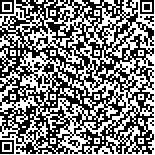| Quote
: |
胡媛媛,姜广建,祝嘉健,暴雪丽,连娟,段小华,刘羽桐,刘佳贤.藜麦复合物调控SIRT1/PGC-1α通路改善糖尿病小鼠肝细胞损伤[J].湖南中医药大学学报英文版,2021,41(12):1863-1868.[Click to copy
] |
|
| |
|
|
| This paper
:Browser 2577times Download 1351times |
| 藜麦复合物调控SIRT1/PGC-1α通路改善糖尿病小鼠肝细胞损伤 |
| 胡媛媛,姜广建,祝嘉健,暴雪丽,连娟,段小华,刘羽桐,刘佳贤 |
| (北京中医药大学中医学院, 北京 100029;北京中医药大学第三附属医院, 北京 100029;甘肃纯洁高原农业科技有限公司, 甘肃 武威 730000;北京中藜生物科技有限公司, 北京 101200) |
| 摘要: |
| 目的 基于SIRT1/PGC-1α通路探讨不同藜麦含量的藜麦复合物对糖尿病小鼠肝损伤的防治作用。方法 将23只雄性C57BL/6J小鼠随机分为正常对照组(ZC,n=6)、模型组(MX,n=6)、藜麦复合物1组(LM1,n=6)、藜麦复合物2组(LM2,n=5)。采用高脂饮食联合链脲佐菌素诱导建立2型糖尿病小鼠模型。给药12周后,全自动生化仪检测血清甘油三酯(triglyceride,TG)、总胆固醇(total cholesterol,TC)、谷丙转氨酶(alanine aminotransferase,ALT)、谷草转氨酶(aspartate aminotransferase,AST)、空腹血糖(fasting blood glucose,FBG)、空腹胰岛素(fasting insulin,FINS)含量,并计算胰岛素抵抗指数(insulin resistance index,IRI)。免疫组化及Western blot测定肝脏组织中沉默信息调节因子1(silent information regulator 1,SIRT1)和过氧化物酶体增殖物激活受体γ辅激活因子1α(peroxisome proliferator-activated receptor γ coactivator-1α,PGC-1α)蛋白的表达水平;HE染色检测肝脏病理变化。结果 与ZC组比较,MX组ALT、AST、TC、FBG含量及IRI均升高(P<0.01或P<0.05),TG、FINS含量均有升高趋势(P>0.05)。与MX组比较,LM1组AST、TG、FBG、FINS含量及IRI明显降低(P<0.01或P<0.05);LM2组ALT、AST、FBG、FINS含量及IRI明显降低(P<0.01或P<0.05)。病理结果显示MX组小鼠肝细胞呈明显脂肪病变,局灶性坏死并伴有炎性细胞浸润;LM1和LM2组可见脂肪空泡和炎性细胞不同程度上明显减少,细胞坏死损伤减轻,肝细胞病变程度显著轻于MX组,其中LM2组改善最明显。免疫组化与Western blot结果均显示,与ZC组比较,MX组肝脏组织SIRT1及PGC-1α蛋白表达水平明显降低(P<0.01或P<0.05));与MX组比较,LM1及LM2组PGC-1α蛋白表达明显升高(P<0.01或P<0.05)。免疫组化结果显示,LM1组SIRT1的蛋白表达水平明显升高(P<0.05)。结论 藜麦复合物可能通过促进SIRT1/PGC-1α的表达来改善胰岛素抵抗和糖脂代谢紊乱,从而减轻糖尿病肝损伤,且含量更高的藜麦复合物治疗效果更为显著。 |
| 关键词: 糖尿病 肝损伤 非酒精性脂肪肝 沉默信息调节因子1 过氧化物酶体增殖物激活受体γ辅激活因子1α 藜麦复合物 |
| DOI:10.3969/j.issn.1674-070X.2021.12.009 |
| Received:September 17, 2021 |
| 基金项目:国家自然科学基金项目(81774171);北京中医药大学横向课题(2180071720024)。 |
|
| Quinoa Compound Regulates SIRT1/PGC-1α Pathway to Ameliorate Hepatocellular Injury in Diabetic Mice |
| HU Yuanyuan,JIANG Guangjian,ZHU Jiajian,BAO Xueli,LIAN Juan,DUAN Xiaohua,LIU Yutong,LIU Jiaxian |
| (College of Traditional Chinese Medicine, Beijing University of Chinese Medicine, Beijing 100029, China;The Third Affiliated Hospital, Beijing University of Chinese Medicine, Beijing 100029, China;Gansu Chunjie Plateau Agricultural Science and Technology Co., Ltd, Wuwei, Gansu 730000, China;Beijing Zhongli Biological Technology Co., Ltd, Beijing 101200, China) |
| Abstract: |
| Objective Based on the SIRT1/PGC-1α pathway to explore the preventive and therapeutic effects of quinoa compound with different quinoa content on liver injury in diabetic mice. Methods A total of 23 male C57BL/6J mice were randomly divided into four groups:normal control group (ZC, n=6), model group (MX, n=6), quinoa compound 1 group (LM1, n=6), quinoa compound 2 group (LM2, n=5). A high-fat diet combined with streptozotocin was used to establish a type 2 diabetic mice model. After 12 weeks of drug administration, the levels of triglyceride (TG), total cholesterol (TC), alanine aminotransferase (ALT), aspartate aminotransferase (AST), fasting blood glucose (FBG) and fasting insulin (FINS) were measured by automatic biochemical analyzer, and then the insulin resistance index (IRI) was calculated. The protein expression levels of silent information regulator 1 (SIRT1) and peroxisome proliferator-activated receptor γ coactivator-1α (PGC-1α) were determined by immunohistochemistry and Western blot, and the pathological changes of liver tissues were detected by HE staining. Results Compared with the ZC group, the MX group showed an increase in serum ALT, AST, TC, FBG and IRI (P<0.01 or P<0.05), TG and FINS contents showed an increasing trend (P>0.05). Compared with the MX group, the levels of AST, TG, FBG, FINS and IRI in the LM1 group were all significantly decreased (P<0.01 or P<0.05); the levels of ALT, AST, FBG, FINS and IRI in LM2 group were significantly decreased (P<0.01 or P<0.05). Pathological results showed that liver cells in MX group showed obvious fatty lesion, focal necrosis and inflammatory cell infiltration. In LM1 group and LM2 group, fat vacuoles and inflammatory cells were significantly reduced to varying degrees, cell necrosis and injury were alleviated, and the degree of hepatocellular lesion was significantly lighter than that in MX group, among which the improvement was most obvious in LM2 group. Immunohistochemical and Western blot results showed that SIRT1 and PGC-1α protein expression levels were significantly decreased in MX group compared with ZC group (P<0.01 or P<0.05); compared with MX group, the expression of PGC-1α in LM1 group and LM2 group was significantly increased (P<0.01 or P<0.05). Immunohistochemical results showed that the protein expression level of SIRT1 in LM1 group was significantly increased (P<0.05). Conclusion The quinoa compound may alleviate diabetic liver injury by ameliorating insulin resistance and glycolipid metabolism disorders by promoting the expression of SIRT1/PGC-1α, and the effect was more significant with higher quinoa content. |
| Key words: diabetes liver injury nonalcoholic fatty liver disease silent information regulator 1 peroxisome proliferator-activated receptor γ coactivator-1α quinoa compound |
|

二维码(扫一下试试看!) |
|
|
|
|


